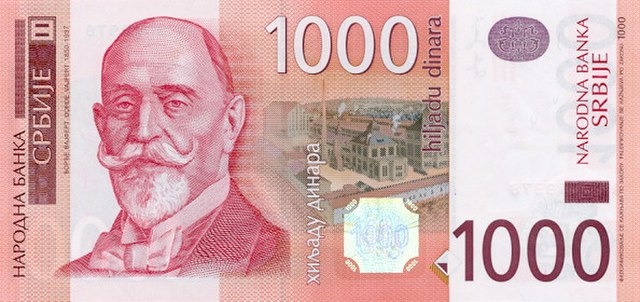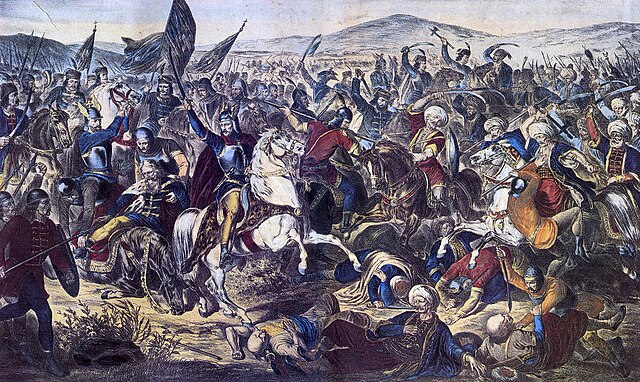The economy of Serbia is a service-based upper-middle income economy in the Central Europe, with the tertiary sector accounting for two-thirds of total gross domestic product (GDP). The economy functions on the principles of the free market. Nominal GDP in 2024 is projected to reach $81.873 billion, which is $12,385 per capita, while GDP based on purchasing power parity (PPP) stood at $185.014 billion, which is $27,985 per capita.
The strongest sectors of Serbia's economy are energy, the automotive industry, machinery, mining, and agriculture. The country's primary industrial exports are automobiles, base metals, furniture, food processing, machinery, chemicals, sugar, tires, clothes, and pharmaceuticals. Trade plays a major role in Serbian economic output. The main trading partners are Germany, Italy, Russia, China, and neighbouring Balkan countries.
Belgrade Waterfront
1000 Serbian dinar banknote
Fiat 500L – motor vehicles are the leading export product of Serbia
Vineyards in Fruška Gora; Serbia was the 11th largest wine producer in Europe and 19th in the world in 2014.
Serbia, officially the Republic of Serbia, is a landlocked country at the crossroads of Southeast and Central Europe, located in the Balkans and the Pannonian Plain. It borders Hungary to the north, Romania to the northeast, Bulgaria to the southeast, North Macedonia to the south, Croatia and Bosnia and Herzegovina to the west, and Montenegro to the southwest. Serbia claims a border with Albania through the disputed territory of Kosovo. Serbia has about 6.6 million inhabitants, excluding Kosovo. Its capital Belgrade is also the largest city.
Lepenski Vir idol, 7000 BC
Vinča culture figurine, 4000–4500 BC
Remnants of the Felix Romuliana Imperial Palace, 298 AD, a UNESCO World Heritage Site; as many as 18 Roman emperors were born in modern-day Serbia
The Battle of Kosovo (1389) is particularly important to Serbian history, tradition and national identity.








